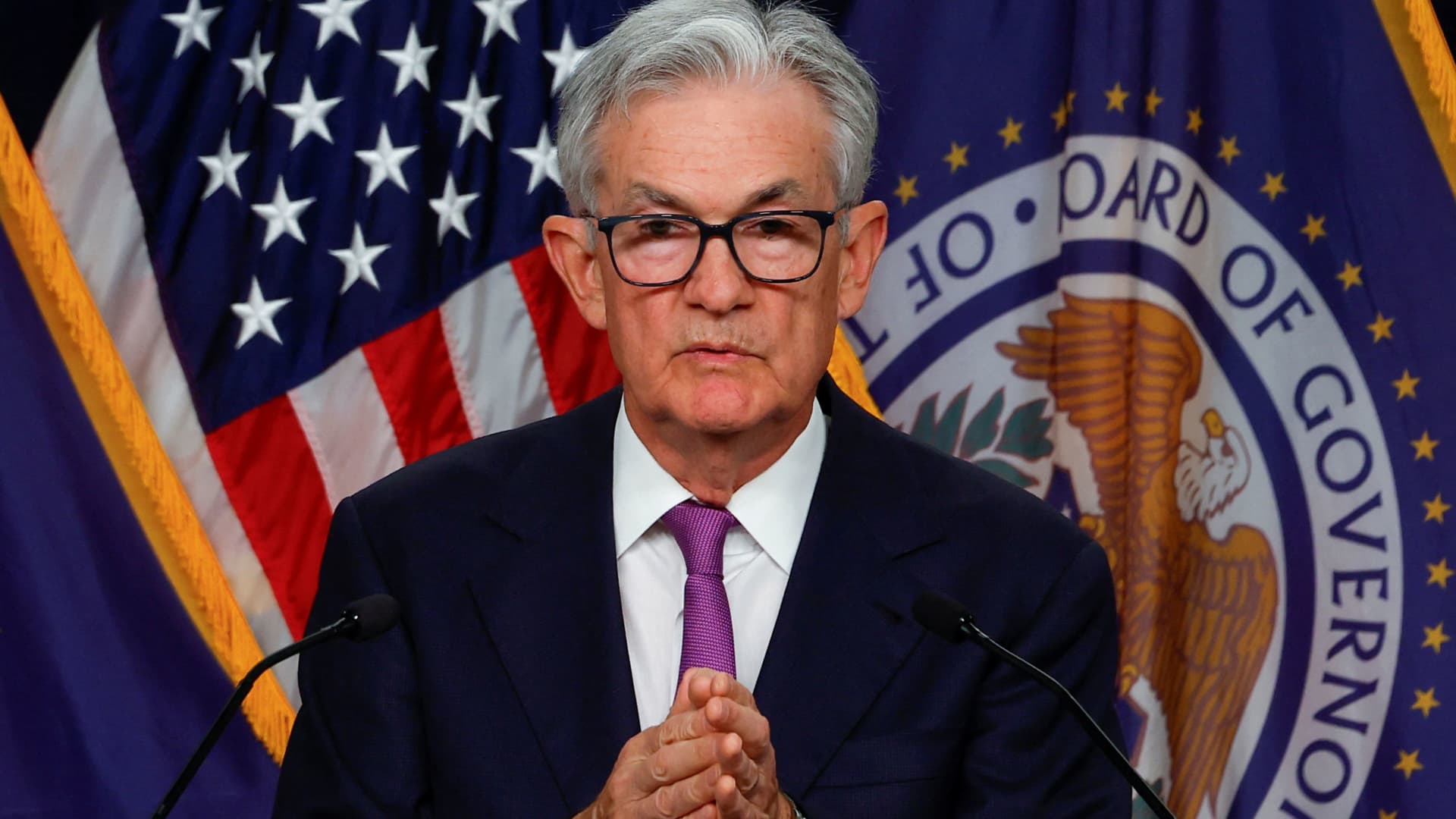U.S. Federal Reserve Chair Jerome Powell holds a press conference after the release of the Fed policy decision to leave interest rates unchanged, at the Federal Reserve in Washington, D.C., on Sept. 20, 2023.
Evelyn Hockstein | Reuters
Federal Reserve Chair Jerome Powell is set to deliver what could be a key policy address, with markets bracing that the central bank leader may still talk tough on inflation.
The stakes got even higher Thursday morning as Treasury yields jumped. The 10-year note was on the cusp of hitting 5%, a psychologically important level that the benchmark security hasn’t seen since 2007, just before the worst of the financial crisis hit.
Rising yields could be a sign that markets think Powell will emphasize the higher-for-longer approach to rates backed recently by multiple other Fed officials.
“The message to give right now is the Fed is done, we are done,” Mohamed El-Erian, chief economic advisor at Allianz, said Thursday morning on CNBC’s “Squawk Box.” “That’s what the message should be. Whether he gives it or not, I don’t know.”
Powell will speak at noon ET to the Economic Club of New York at a critical time for the U.S. economy.
Inflation numbers have been improving lately, but Treasury yields have been surging, sending conflicting messages about where monetary policy might be headed. El-Erian said the economy is on the verge of an “inflection point” and criticized the Fed for being dependent on data that is backward-looking at time when officials should be focused more on what’s ahead.
Markets largely expect the Fed to stay on hold with rates, but they will be looking to Powell for confirmation and clarification on how officials view both current conditions and longer-term trends.
“Powell is always tacking back to whatever helps feed the narrative that they need to stay vigilant, and for understandable reasons,” said Luke Tilley, chief economist at Wilmington Trust. “I just expect him to keep talking about the strength of the economy and the surprising strength of the consumer in the third quarter as a risk for inflation. That is enough ammunition to keep talking about staying vigilant.”
Essentially, Tilley expects the Powell message to break into three parts: The Fed needed to get rates high quickly, which it did; that it had to find a peak level, which is part of the current debate; and that it needs to figure out how long rates need to stay this high to get inflation back to its 2% target.
“Really, their ultimate goal is to keep financial conditions tight so inflation comes down,” he said. “He’s going to use that framework, even if he’s dovish about Nov. 1 (the next Fed rate decision) or December to shift the hawkishness to that third question of how long to keep them this high.”
“Higher for longer” has become an unofficial mantra in recent days, with Philadelphia Fed President Patrick Harker earlier this week mentioning the term specifically for how he feels about policy.
Harker was one of several Fed officials, including governors Philip Jefferson, who spoke earlier this month, and Christopher Waller, who spoke Wednesday, to advocate holding off on rate hikes at least in the immediate future while they weigh the effects of incoming data. Waller said the Fed can “wait, watch and see” before it moves on rates.
Powell is expected to join the chorus Thursday, even if his message is filled with caveats about not becoming complacent in the fight against inflation.
“Powell has to present himself to investors as the dispassionate neutral leader and allow [others] to be more aggressive,” said Jeffrey Roach, chief economist for LPL Financial. “They’re not going to declare victory, and that is one reason why Powell is going to continue to talk somewhat hawkish.”
To that point, New York Fed President John Williams on Wednesday moved some of the way there, when he repeated another familiar mantra, that the Fed will have to keep the “restrictive stance of policy in place for some time” to deal with inflation, according to a Reuters report.
Similar to the other speakers, Powell likely will reiterate a data-dependent focus for the Fed after a much more aggressive path in which it has raised its benchmark borrowing rate 11 times for a total of 5.25 percentage points, its highest level in 22 years. The Fed opted not to hike in September.
He also, though, will be looked to for some guidance as to how he feels about rising yields, in light of the 10-year Treasury having inched closer to 5%, its highest point in 16 years.
The chair “will stick to the message … that the data has been coming in stronger than expected, but there has also been a big move in yields, which has tightened financial conditions, so no urgency for a policy response in November and the Fed can adopt a wait-and-see approach,” Krishna Guha, head of global policy and central bank strategy at Evercore ISI, said in a client note.
Guha said that a Fed on hold now will only be a “down payment” on “extra cuts” in rates for 2024 as inflation and economic growth both weaken.
Don’t miss these CNBC PRO stories:
